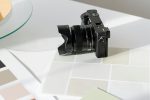Choosing the Right Design Partner: Local Firms vs. Online Platforms
Are you in the market for a new business logo or perhaps a complete website redesign? If so, one of your first decisions will be choosing the right design partner. The question arises: should you opt for a local design firm or seek out services from freelancers on platforms like Fiverr? Let’s explore the pros and cons of each option to help you make an informed decision.
The Appeal of Local Firms
One of the biggest advantages of hiring a local design company is the convenience of proximity. Meeting in person allows for more collaborative discussions, ensuring that your vision is clearly communicated. Local firms often have a better grasp of your regional market and preferences, which can be invaluable when creating a design that resonates with your target audience.
Additionally, working with a local team can foster a sense of accountability. You can easily follow up on projects and ensure that you’re receiving the level of service you expect.
Online Freelance Platforms: A Cost-Effective Alternative
On the other hand, websites like Fiverr can offer substantial savings. These platforms provide access to a diverse range of designers with various styles and price points. If you have a specific design in mind and aren’t overly concerned about working face-to-face, this could be a viable option.
However, while cost-effective, working with freelancers online presents its own set of challenges. The quality can vary dramatically, and it may take multiple attempts to find a designer whose style aligns with your vision. Additionally, communication can sometimes be less straightforward than in person.
Finding the Right Fit: How to Vet Designers
Regardless of the route you choose, properly vetting your potential designers is crucial. Here are a few steps to ensure you find the right match:
-
Review Portfolios: Examine their previous work to ensure their style aligns with your vision.
-
Check Reviews and Testimonials: Feedback from previous clients can offer insights into the designer’s reliability and collaboration skills.
-
Schedule a Consultation: Whether local or online, a conversation can reveal a lot about how well a designer understands your needs.
-
Discuss Your Vision: Be clear about your ideas and expectations. A good designer will be enthusiastic about collaborating and adjusting their approach to suit your goals.
-
Ask About Their Process: Understanding how they work can help you gauge whether their method aligns with your timeline and workflow.
Conclusion
Deciding between a local design firm or an online freelancer depends on your specific needs and budget. Local firms offer accountability and a personalized experience, while online platforms may save you money and provide a wider array of styles. Take the time to assess your options and vet potential designers carefully to ensure you achieve the perfect look for your business. Ultimately, the right choice will help you create a compelling brand presence that resonates with your audience.










2 Comments
When considering whether to engage a local firm for your business logo and website design versus using a freelance platform like Fiverr, there are several factors to weigh. Each option has its unique advantages and challenges, so let’s explore them in detail.
Benefits of Local Firms
Face-to-Face Interaction: One of the most significant advantages of hiring a local firm is the potential for direct communication. Meeting in person can facilitate a clearer understanding of your vision and allow for immediate feedback. This is especially useful when discussing design iterations or adjustments.
Familiarity with Market Trends: Local firms often have insights into regional market trends and preferences, allowing them to tailor your branding in a way that resonates with your target demographic. They might also be more familiar with the local culture, which can greatly enhance the effectiveness of your branding.
Comprehensive Services: Many local agencies offer a range of services that go beyond just logo design and website creation. They may provide branding strategies, SEO support, and marketing insights, creating a more cohesive identity for your business.
Considerations for Freelance Platforms
Cost-Effectiveness: Websites like Fiverr can offer significant savings, especially if you’re on a tight budget. You can find a range of prices and styles, allowing you to choose a designer that fits your financial constraints.
Diverse Options: On platforms like Fiverr, you can choose from a wider pool of designers with varying styles, which might give you access to creativity that aligns closely with your vision.
Quick Turnaround: Freelancers on these platforms can often complete projects more quickly than local firms, which might have a heavier workload or longer timelines due to simultaneous projects.
How to Vet Designers
Whether you choose a local firm or a freelancer, vetting your designer is crucial. Here are some practical steps to ensure you select the right professional for your project:
Portfolio Review: Always ask to see a portfolio of the designer’s past work. Look for projects that show versatility and alignment with your style. Pay attention to details such as color schemes, typography, and overall aesthetics.
Client Testimonials: Reach out for testimonials or reviews from previous clients. This can provide insight into the designer’s reliability, communication skills, and how well they adapt to client feedback.
Understanding Your Vision: Discuss your ideas with potential designers to see how well they understand your vision. A good designer should be able to ask probing questions that help clarify your needs and may even offer valuable suggestions.
Communication Skills: Gauge how well the designer communicates. Are they responsive? Do they take the time to explain their ideas or processes? Effective communication is vital for ensuring that your vision is accurately translated into the final product.
Budget Transparency: Make sure that the cost structure is clear from the outset. Some designers may quote a low initial price but have hidden fees for revisions or additional services. Be clear about your budget and any constraints upfront.
Trial Project: If you’re still uncertain, consider starting with a smaller project to evaluate the designer’s style and process. This could be a simple logo or social media graphic that could inform your decision for larger projects down the line.
Conclusion
In summary, both local firms and platforms like Fiverr have their advantages depending on your specific needs, budget, and preference for communication. It’s essential to take the time to vet designers thoroughly, regardless of the route you choose. Clear communication of your vision and expectations will be central to a successful outcome, so be prepared to articulate your ideas while also being open to professional insights. Good luck with your branding journey!
This is a thoughtful exploration of the pros and cons of local design firms versus online platforms. I’d like to add that while both options have their merits, a hybrid approach could also be very beneficial for some businesses.
For instance, you might start by scoping out local firms to gauge their understanding of your brand’s vision and gain insights that are crucial for your design process. This face-to-face interaction can help you clarify your ideas and build rapport, which is often invaluable.
On the other hand, you could complement this by leveraging online platforms for specific design tasks that require a fresh perspective or a unique style not offered locally.
Moreover, consider the importance of clear project scope and detailed communication, regardless of your choice. A well-defined brief can significantly mitigate misalignments in style and expectations, which is often a challenge in both scenarios.
Lastly, don’t overlook the value of asking each designer their thoughts on collaboration; a designer who thrives on constructive feedback can enhance the creative process, whether they’re local or remote. Finding the right balance between accessibility, cost, and creativity might just provide the best outcome for your brand.